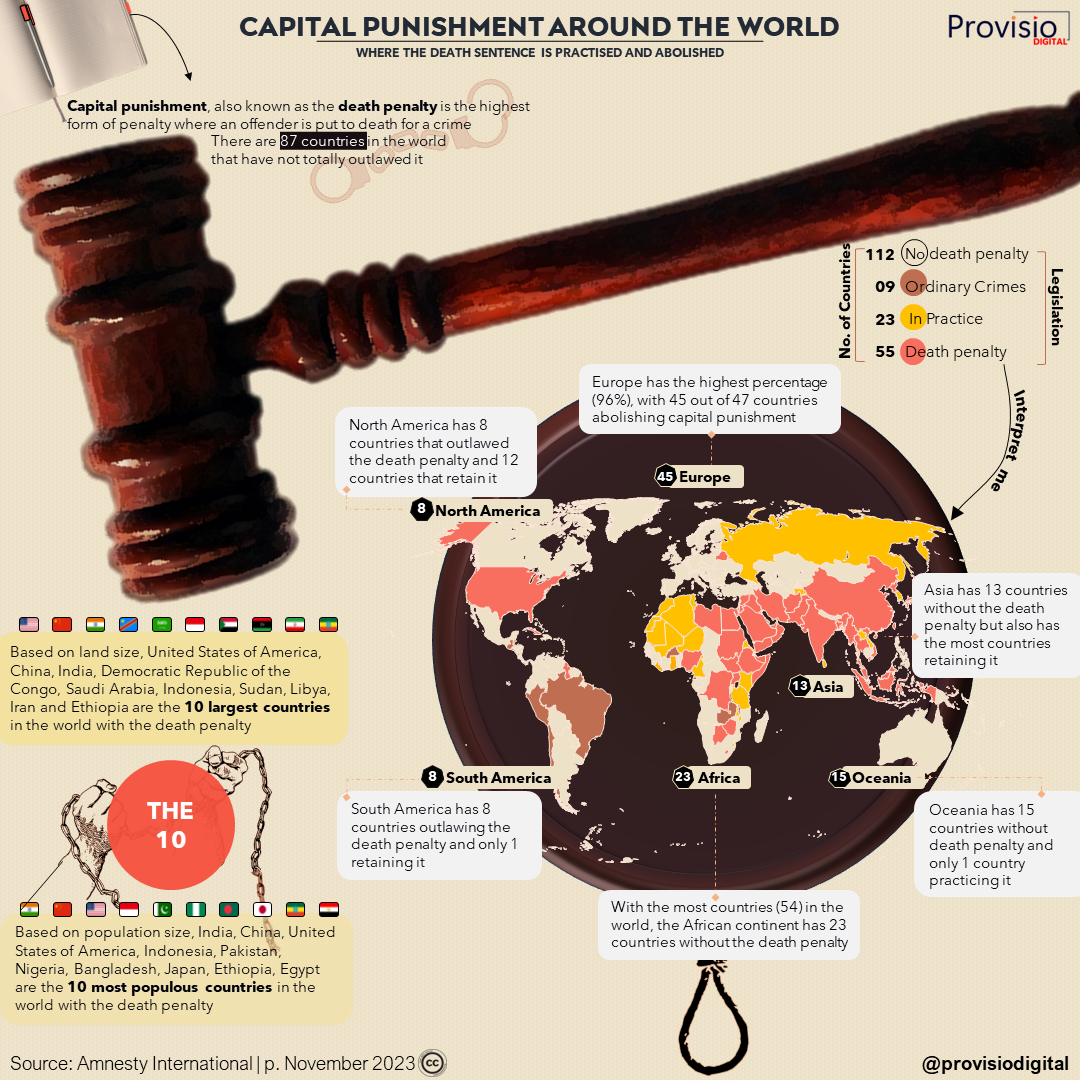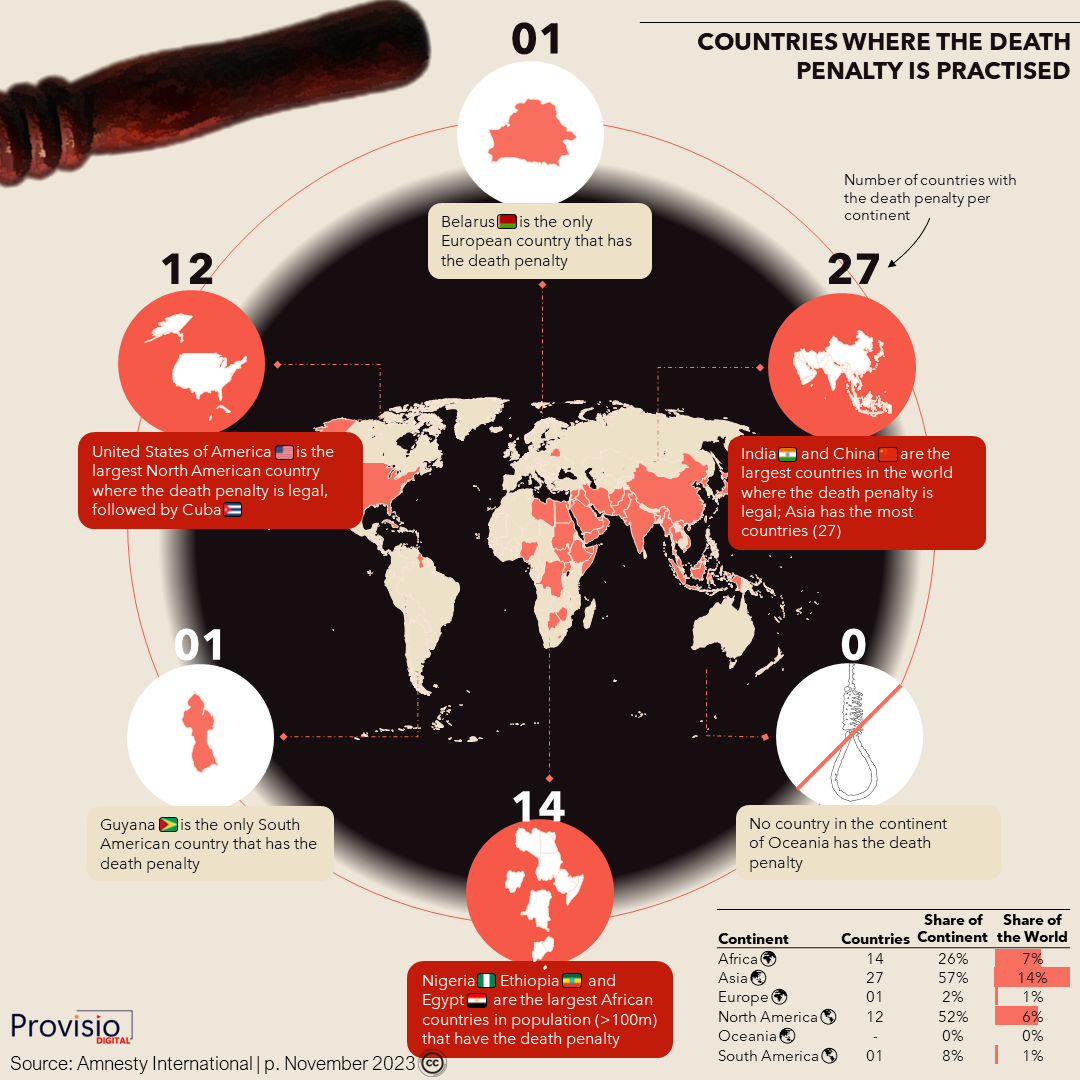Why We Looked Into This »?👀
|
It was observed that 55 countries (28% of the total) uphold the death penalty worldwide, with Asia, Africa, and North America constituting the largest percentage of nations where this practice is maintained.
Capital Punishment Definitions
Before getting into the analysis of capital punishment, it is important to understand the following definitions:
Analysis of Findings
Abolition of the death penalty has been more successful in Europe, South America and parts of Asia/Africa while North America and some regions of Asia and Africa still actively use capital punishment in their justice systems.

When analyzing the result of countries that have abolished capital punishment in the world, the data presents an interesting perspective. While the focus is often on individual countries, examining the distribution across continents reveals varying regional approaches to this practice.
- Europe: With 45 countries, Europe has the highest percentage of countries that have abolished capital punishment. This underscores a strong trend towards abolition in this continent, reflected by The Council of Europe commitment to create a death penalty free zone in its 46 member states.
- Africa: With 55 countries (recognized by the African Union) on the continent, only 25 of them have abolished capital punishment. There remains a mixed approach to this issue across the continent. For the purpose of this analysis, we used 54 countries in Africa.
- Asia: 13 out of 48 Asian countries have abolished capital punishment. This is the lowest in the world for any continent and reflects a strict approach towards crime via capital punishment across different Asian nations.
- Oceania: In Oceania, Tonga is the lone country out of 16 that upholds the death penalty, with the most recent execution occurring in 1982.
- North America: Following Asia, North America has the second-highest percentage of countries within a continent that still uphold the death penalty, with 52% of the countries maintaining this practice. In North America, only 8 countries have abolished the death penalty, which is equal to the number of countries in South America that have done the same.
- South America: The South American continent has a smaller number of countries retaining capital punishment, with Guyana being the sole country in the region upholding the death penalty.
The data shows the changing global attitudes towards capital punishment, emphasizing regional differences and progress in abolishing this practice. Here is an analysis of the data grouped by regions:
Based on the number of countries per continent relative to the total number of observed countries, Europe has the largest representation, comprising 45 countries, accounting for 23% of the total. Following this, Africa is represented by 25 countries (12%), and Oceania by 15 countries (8%). Asia is the home to 13 countries (7%), while North America and South America have 8 (4%) each.

Conclusion
Examining historical, cultural, and legal factors that contribute to the retentionist approach in various regions provides critical insights. For instance, in Asia and the Middle East, traditional legal systems and cultural norms significantly influence the retention of capital punishment. This analysis offers a deeper understanding of why certain regions continue to uphold capital punishment. Additionally, considering the impact of religion, political history, and current geopolitical dynamics enhances our understanding of why death penalty policies persist in specific regions despite global trends towards abolition.
This work is licensed under a Creative Commons Attribution-NonCommercial 4.0 International License.



